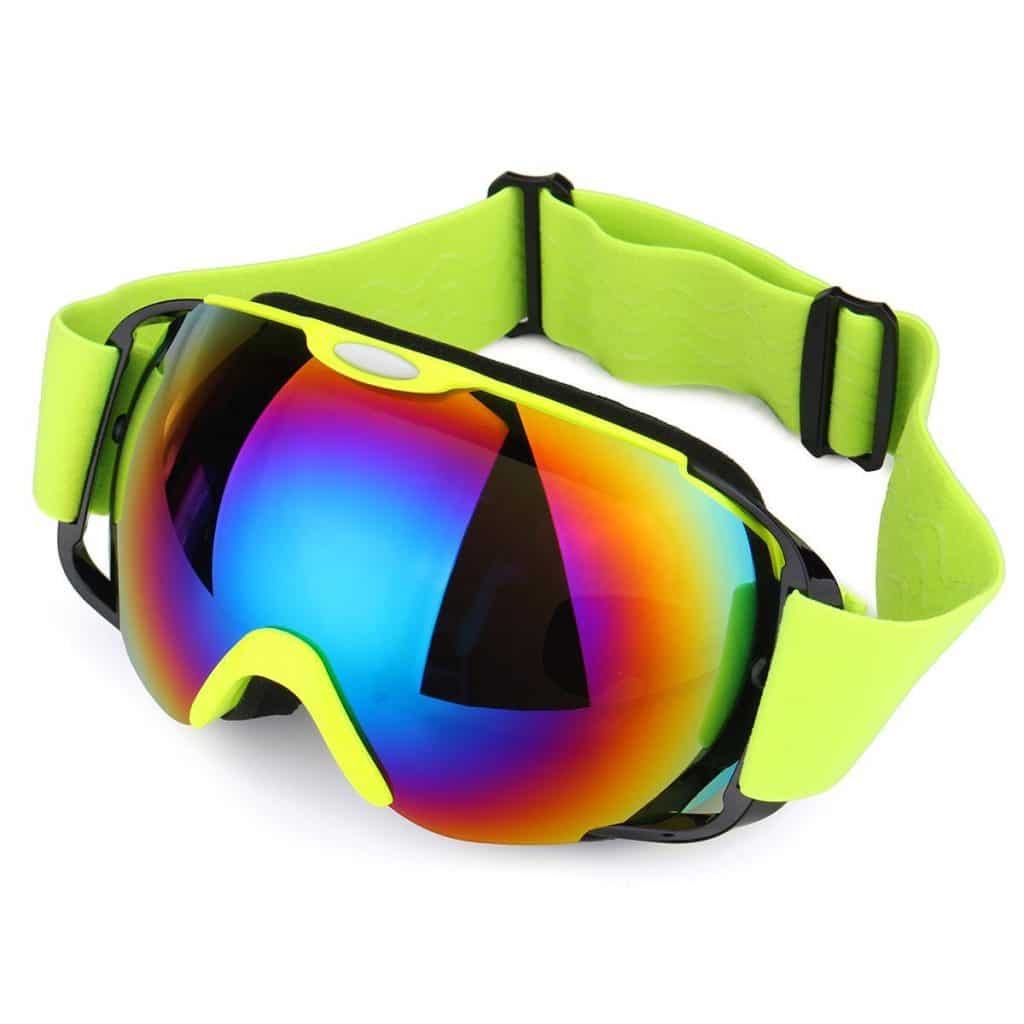Skiing can be an exhilarating experience, bringing you closer to the elements and testing your agility and endurance. However, the experience can quickly become uncomfortable or even dangerous without the correct gear. One of the most important pieces of equipment that often gets overlooked is ski goggles. This guide will take you through a step-by-step process on how to choose ski goggles to enhance your skiing adventure.
Why Do You Need Ski Goggles?

Ski goggles are not just for style; they play a critical role in your skiing experience by protecting your eyes from the sun’s harmful UV rays, reducing glare, and shielding you from wind, snow, and cold. Additionally, the right pair of goggles can significantly enhance your visibility, allowing you to navigate the terrain safely and efficiently.
Understanding Different Types of Ski Goggles
Before delving into what to look for when choosing ski goggles, it’s crucial to understand the different types available:
- Cylindrical Lenses: These lenses curve horizontally across your face but are flat vertically. They’re generally less expensive but can cause more glare and less peripheral vision.
- Spherical Lenses: These lenses curve both horizontally and vertically around your face, providing better peripheral vision and less glare.
Choosing the Right Lens
Once you’ve decided on the type of goggles, the next step is selecting the appropriate lens. There are several factors to consider, including:
- Lens Colour: Ski goggle lenses come in a variety of colours, and each colour serves a specific purpose. Darker colours like black, gray, and gold are great for sunny conditions, while lighter colours like yellow, rose, and blue are ideal for cloudy or snowy days. Some goggles come with interchangeable lenses for different conditions.
- VLT (Visible Light Transmission): This refers to the amount of light that can pass through the lens. Lenses with lower VLT percentages are darker and better for sunny conditions, while lenses with higher VLT percentages are lighter and suitable for overcast or low-light conditions.
- Polarized Lenses: These lenses reduce glare from the sun and are perfect for high-glare environments, such as sunny days or higher altitudes.
- Photochromic Lenses: These lenses automatically adjust their VLT percentage depending on the light conditions. They are versatile and good for varying weather conditions.
Fit and Comfort
An essential factor to consider when choosing ski goggles is how they fit. Your goggles should be comfortable, snug but not too tight, and they should fit well with your helmet. Look for goggles with an adjustable strap to ensure they fit properly. Foam padding around the frame can provide additional comfort and help prevent wind and snow from getting in.
Ventilation and Anti-fog Features
Your ski goggles need to have adequate ventilation to prevent fogging, which can significantly reduce your visibility. Look for goggles that have anti-fog coatings and vents to allow for air circulation. Double lenses can also help as they provide a thermal barrier that reduces fogging.
UV Protection
Even in overcast conditions, UV rays can be harmful to your eyes. Therefore, it’s essential to choose goggles that offer 100% UV protection. This feature is typically standard in most ski goggles, but it’s always worth double-checking.
Extra Features: Over-The-Glasses (OTG) and Prescription Goggles
If you wear glasses, you’ll need to consider goggles designed to fit over your glasses, known as OTG goggles. Alternatively, you can get prescription ski goggles.
Price and Durability
Ski goggles can range significantly in price. When deciding on a budget, consider how frequently you’ll be using them and the conditions you’ll be skiing in. Additionally, look for goggles that are durable and will last several seasons.
Conclusion
Choosing the right pair of ski goggles is an important step in preparing for your skiing adventure. From the type and color of the lens to the fit and comfort, many factors come into play. Consider your needs, preferences, and the typical weather conditions you’ll be facing when selecting your ski goggles. By taking the time to find the right pair, you’ll ensure a more comfortable, safe, and enjoyable skiing experience.



Recent Comments